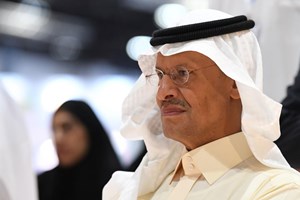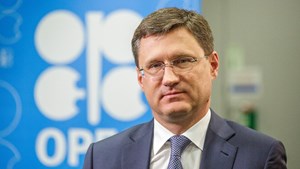Now that a full year has gone by since the Covid-19 pandemic began to slam the global economy in general, and oil demand in particular, the leaders of Saudi Aramco and Chevron see the market for oil and gas improving this year, with some momentum in the back half. But that outlook is tempered by the fact that the pandemic has forced some changes to the way that business is conducted.
This assessment from Saudi Aramco President and CEO Amin Nasser, and Chevron Chairman and CEO Mike Wirth, occurred during Tuesday morning, Day 2, at the virtual CERAWeek conference, in a plenary session entitled, “Charting an Era of Recovery.” Joining them as moderator was IHS Markit Vice Chairman Daniel Yergin.

Saudi Aramco President and CEO Amin Nasser
The Saudi Aramco perspective. Prompted by Yergin to assess the last 12 months, Saudi Aramco’s Nasser stated that “(Last year), we were faced with the biggest crisis in a century. But our industry is used to challenging situations. We sharpened our focus on resilience, which gave us an agility to respond quickly to a volatile market, and also to arrange changes to address the economic conditions.
As for specific effects from the pandemic, Nasser said that “Covid also accelerated our plan to digitalize operations and deploy and utilize the IoT and Big Data. We can now contact technical inspection from our headquarters, here in Dhahran, and do a lot of things remotely, rather than travel overseas. In project management, where interaction is limited, due to Covid, we are deploying digital twins for major projects…Today, we are seeing a recovery that’s taking place and that’s good. But some jobs are not going to return.”
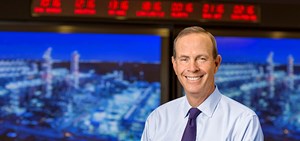
Chevron CEO Mike Wirth
Chevron’s assessment. Asked by Yergin what the lessons learned have been in terms of the crisis and what has changed for his company, Wirth responded, “I think one of the key lessons here is the essential nature of our industry. We saw a pandemic that created a global recession and an enormous response in policy that created economic slowdowns around the world. And yet, as we went through one of the most significant shocks that we’ve seen to the global economy in decades, demand destruction for oil and gas only averaged something like 9%, despite a crisis in which we were tested like never before. And so, I think it demonstrates how important our industry is to the world economy.
Looking at the operational effects, Wirth continued, “From a company standpoint, it underlined the importance of a strong balance sheet, as we saw financial stress introduced into our business. We were able to maintain our dividend, we were able to execute M&A during that period of time. And you asked about technology. I think this is a really interesting positive side of what we’ve been through. While our digital journey had certainly begun, it was a chance for us to really accelerate our use of some of these digital technologies and the things everybody did—working remotely, we’re certainly familiar with. We had directional drilling going on from people’s homes, which just a couple of years ago, we had to have somebody on a rig that was controlling the drill bit. That had been moved to a drilling support center centralized in Houston, and we were able to quickly move that to individual employees’ homes. We’ve been using augmented reality, instead of flying subject matter experts out to offshore platforms. With headsets and integrated technology, an operator on a platform and a subject matter expert halfway around the world can trouble-shoot problems that previously we would send people physically, to deal with. We’ve done remote inspections and audits using drones.”

Vaccine progress is driving renewed market optimism.
Market prognosis. In terms of where the market is now, and where the recovery goes, both executives had very positive outlooks. “We have been going from a 20-MMbpd reduction, back in April, to quite an improvement right now,” said Nasser. I see the markets improving. We have seen China and East Asia with strong demand. India is also picking up to almost the same rate as pre-Covid. There is an impact that we see in the West, in the U.S., but with the rapid deployment of vaccines, we are seeing good cause for optimism and recovery in demand. The current demand that we see in the market is about 94 MMbpd, and our expectation by next year is that it will be 99 MMbpd. This is where we started in January 2020. I see demand in the market continuing to improve, especially from the second half of this year.”
Asked if the current market “feels like recovery” to him, Wirth said, “I think we’re feeling recovery underway. As Amin said, different geographies around the world are in different places. And certainly, if you look at it from a products perspective, there’s still some significant variation. Diesel demand is actually at or above where it was, pre-pandemic, pretty much everywhere. A lot of consumer activity is now being supported through door-to-door distribution, for instance, driving demand. Gasoline demand is still a little bit off. Obviously, aviation fuels are the big one, as we’ve seen some travel return within countries or even regions, but longer-haul air transportation is still significantly off…But, I think the recovery is underway.”
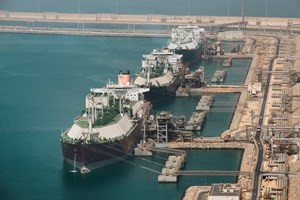
LNG export terminal, Middle East
Natural gas and LNG have gone through their own ups and downs over the last year, and Yergin asked the two executives whether they felt positive about these commodities. “Well, we’re bullish on natural gas,” replied Wirth emphatically. “And you have to look no further than the addition of our Eastern Mediterranean position last year for evidence of that. It’s been an interesting season for LNG spot prices. Certainly, in Asia, we saw a surge accompanied by a unique set of conditions, with some very cold weather in north Asia, some supply outages and logistics, and constraints on the system. Not a lot of trades done at some of the elevated spot prices, but a big spike that we saw. So, that’s come back to some more-normal levels. Clearly, LNG has a very important role in the lower-carbon economy that we’re all working toward. It may have a role in supporting hydrogen and new opportunities to commercialize gas. We think gas is an important part of the energy future around the world.
Nasser also was quite positive on gas. “If you recall, not that long ago, natural gas was seen as a bridge fuel for a renewable future,” he noted. “But now, sentiment has somehow turned, partly due to concern about fugitive methane emissions. But I also see this as an area that is already receiving attention from our industry. Our view is that gas still has better credentials over other fuels, and it will grow significantly in a number of sectors, especially for power generation, and for industry and commercial use….
“In the Kingdom, and for Saudi Aramco,” continued Nasser, “we are growing our gas substantially, and by 2030, we will have a significant amount of gas, to the point where approximately 50% of the grid in the Kingdom will be on renewables by 2030, and 50% will be on gas. We are using both conventional and unconventional gas resources to grow our volumes.”
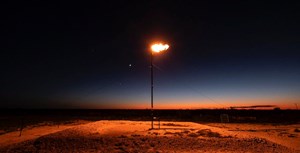
Gas flaring, Permian basin
Methane practices. Given rampant ESG considerations in the industry these days, methane management is never far from the top minds in many large operators. “We were in discussion with a prominent policymaker (in Washington), who raised some concerns that were just mentioned as a reason to be careful in moving forward with natural gas,” explained Wirth. “I think it’s incumbent on all of us to be sure that we’ve done everything we can to reduce or eliminate methane emissions. The technologies exist for us to do so, and the incentives exist to do so. We need to have robust monitoring and reporting on methane emissions, and ensure So, I think the industry is making a lot of the right moves. We need to be sure in the United States that we’re working with the new administration, in order to help them understand that, to see what we’re doing and to see the benefit of the voluntary actions that are being taken already.
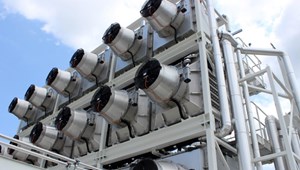
Carbon management will be a central focus for technology development.
ESG attitudes. The methane discussion naturally led to comments about ESG practices. “This is an area long-familiar to Chevron,” said Wirth. “I would say, first of all, that ESG may seem new to investors, but ESG is not new to Chevron. It goes to the heart of our company values. From nearly a hundred years ago, I keep a copy of Standard Oil Spirit on my desk, which was published in 1923, and it laid down, at its foundation, a discussion of the relationship between a company and its employees, it talked about the work week, it talked about benefits for employees, about relationships with communities and neighbors. It talked about safety. And things that are very important today have been part of the fabric of our company for more than a century. And so, ESG is integral to our business everywhere we operate. It’s not static, it’s always a work in progress.”
Nasser said that ESG has been on his company’s radar much longer than people might think. “First, I agree with Mike, it is a work in progress,” noted Nasser. “Yet, ESG has always been a big part of Aramco’s corporate strategy. Our focus has always been on stakeholders’ interests. In fact, Aramco’s ESG initiatives and programs started almost half-a-century ago, when the term was not in common use. Our master gas system was built in the Seventies, and by eliminating flaring, the system, alone, has removed some 100 million tons of CO2 every year since then. The carbon intensity of our oil production is among the lowest, and the same for methane emissions. When we look at ESG, one size honestly does not fit all. There needs to be a framework to take care of all the stakeholders around the world. Today, on a global basis, our customers, 70% to 75%, are in developing and emerging economies. So, we need to develop a common framework, that takes into consideration the whole world.
Source: https://www.worldoil.com/news/2021/3/3/ceraweek-day-2-saudi-aramco-and-chevron-see-better-days-ahead









